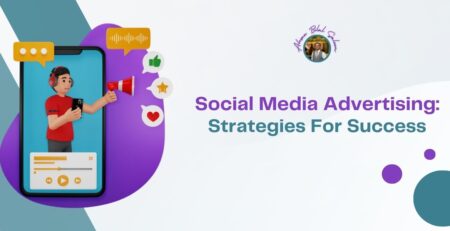Viral Marketing: How to Make Content Spread Like Wildfire
In today’s fast-paced digital world, the dream of every marketer is to create a campaign that “goes viral.” Viral marketing is not just about luck—it’s a carefully crafted strategy that taps into emotions, trends, and the human desire to share. By understanding the science and art behind virality, you can significantly boost your brand’s visibility and engagement. Let’s dive into the essential components of making content spread like wildfire.
What is Viral Marketing?
Viral marketing refers to a strategy where content spreads rapidly from person to person, often through social media platforms, emails, or word of mouth. It leverages the power of organic sharing, turning your audience into brand advocates. The ultimate goal? To amplify your message far beyond your initial reach without substantial advertising costs.
Key Elements of Viral Content
- Emotionally Evocative People share content that resonates with their emotions. Whether it’s humor, awe, anger, or joy, tapping into strong feelings encourages users to click the “share” button. A classic example is the tear-jerking holiday commercials by brands like Coca-Cola or John Lewis, which connect deeply with audiences.
- Relatability Content that aligns with your audience’s values, experiences, or aspirations is more likely to be shared. Memes and relatable quotes often go viral because they echo shared experiences.
- Visual Appeal Eye-catching visuals, whether through videos, images, or infographics, grab attention faster than text-heavy posts. Platforms like Instagram, TikTok, and YouTube thrive on visually compelling content that encourages interaction.
- Simplicity Complex messages tend to get lost in translation. Keep your substance clear, brief, and straightforward. Simple, impactful messages are easier to remember and share.
- Timeliness Tapping into current events, trending topics, or cultural moments makes your content relevant. For instance, brands leveraging the latest internet challenges or memes often gain viral traction.
Steps to Create Viral Content
- Know Your Audience Might be thinking Grasping your crowd’s inclinations, interests, and trouble spots is significant. Analyze demographics, conduct surveys, and use analytics tools to determine what resonates most.
- Create Share-Worthy Content Focus on value-driven content—whether it’s educational, entertaining, or inspiring. Remember, people share content that makes them look good or offers value to their network.
- Optimize for Platforms Tailor your content to the platform you’re targeting. A TikTok video might need to be punchy and fun, while LinkedIn posts require a more professional tone.
- Incorporate a Call-to-Action (CTA) Urge your crowd to lock in. A solid CTA like “Label a companion who requirements to see this!” or “Share this if you agree!” nudges viewers to spread your message.
- Leverage Influencers Team up with powerhouses who line up with your image. Their endorsement can give your content the initial push it needs to reach a broader audience.
- Make it Easy to Share Include share buttons on your website or post content in formats that are easy to repost. The fewer barriers to sharing, the more likely your audience will engage.
Examples of Successful Viral Marketing Campaigns
- The Ice Bucket Challenge This campaign by the ALS Association combined a fun, shareable activity with a cause. It raised millions and became a global sensation.
- Dove’s Real Beauty Sketches Dove struck an emotional chord with a campaign focusing on self-perception and beauty standards, which resonated with millions of people worldwide.
- Old Spice’s “The Man Your Man Could Smell Like” Humorous, over-the-top, and highly relatable, this campaign became iconic, boosting Old Spice’s brand recognition and sales.
Common Mistakes to Avoid
- Being Inauthentic Trying too hard to go viral can backfire. Audiences can spot insincerity and may reject content that feels forced or out of character for your brand.
- Ignoring Analytics Failing to analyze your content’s performance can lead to repeated mistakes. Use insights to refine your strategy for future campaigns.
- Neglecting the Follow-Up Virality is fleeting. Without a plan to sustain interest, your campaign might fade without generating lasting value for your brand.
Conclusion
Viral marketing is not just a game of chance—it’s about creating content that connects with people on a personal level, is easy to share, and is relevant to the current cultural landscape. By focusing on emotions, relatability, and smart distribution, you can increase your chances of creating content that spreads like wildfire. Remember, the true power of viral marketing lies not just in the reach but in the lasting impact it creates for your brand.










